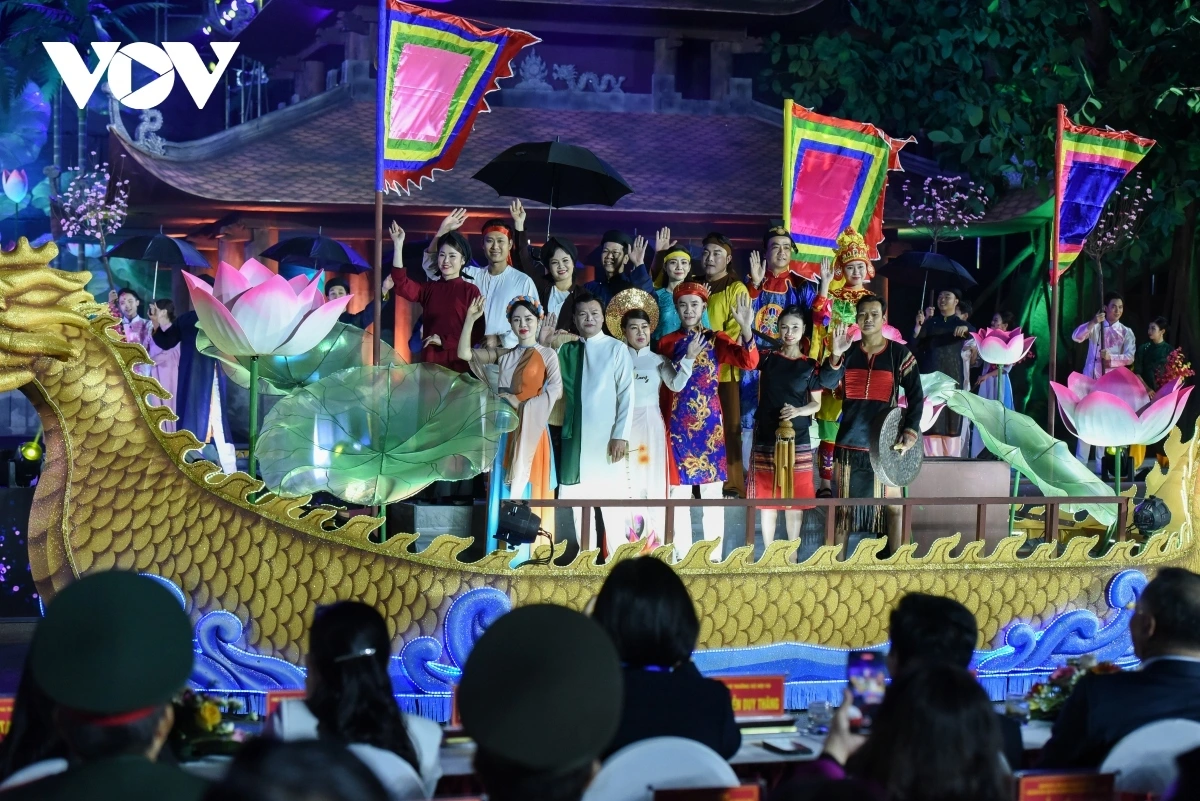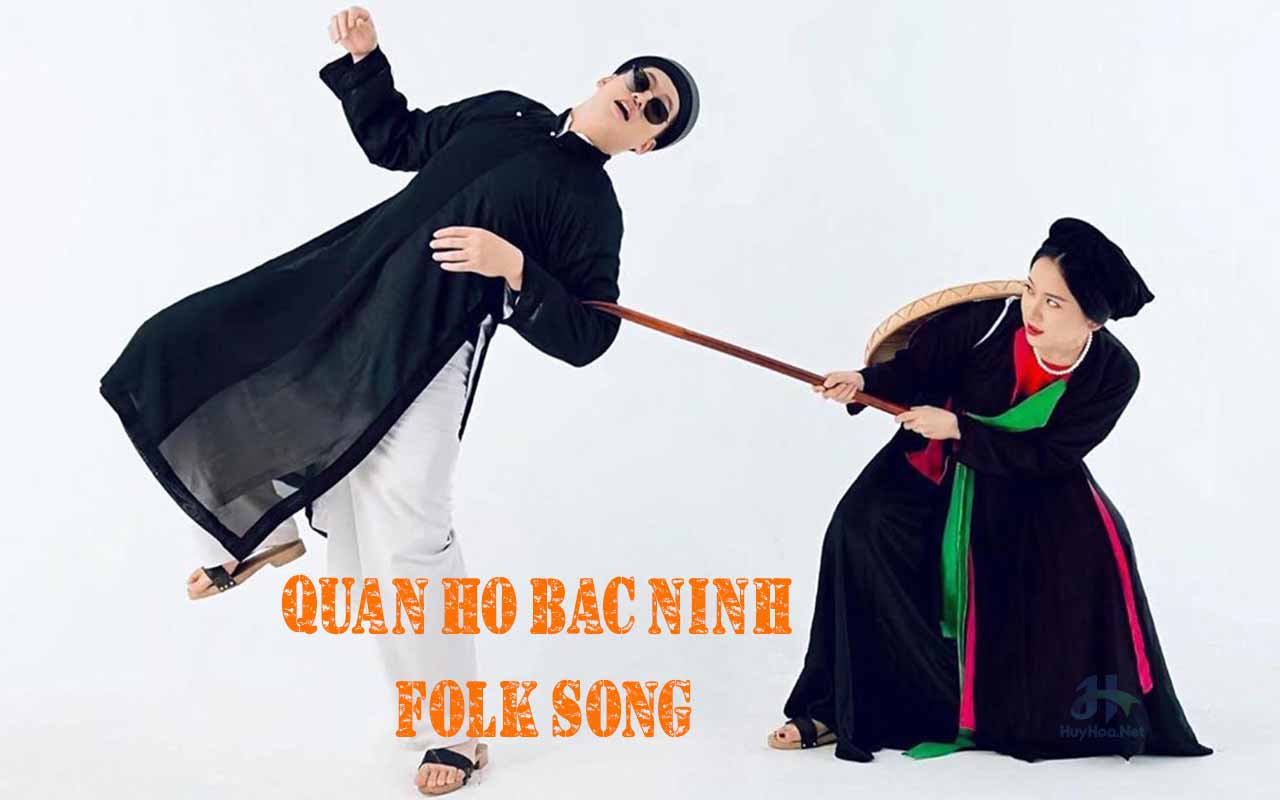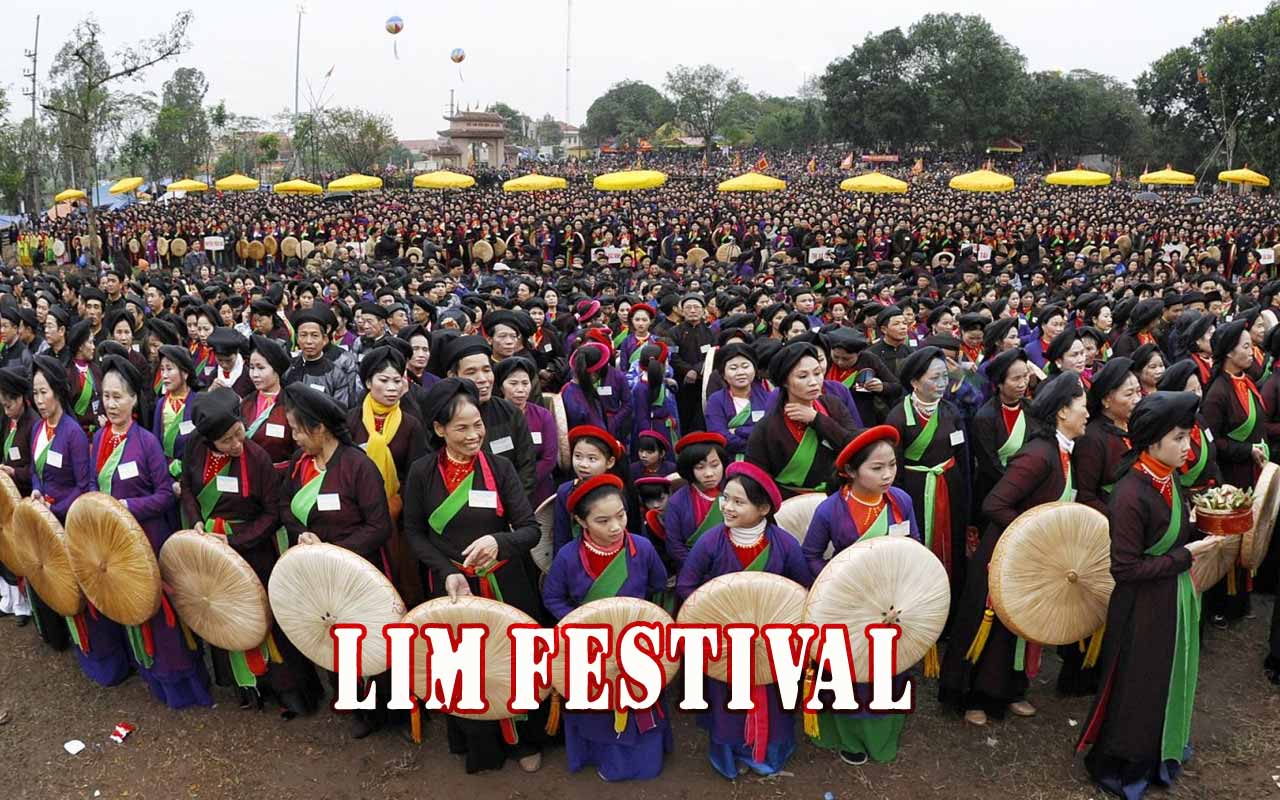Quan Ho Bac Ninh folk songs are a vibrant expression of Vietnamese culture. This UNESCO-recognized tradition features intricate melodies, poetic lyrics, and captivating vocal interplay between male and female singers. Originating in the 13th century, Quan Ho has evolved over time while retaining its essence as a form of courtship and community celebration. This article delves into the history, characteristics, and cultural significance of Quan Ho, offering a comprehensive overview of this unique musical heritage.
Table of Contents
The History and Origins of Quan Ho Bac Ninh Folk Songs

Quan Ho, also known as Ca Quan ho or Quan ho Bac Ninh singing, is a captivating folk music tradition deeply rooted in the cultural heritage of northern Vietnam. Originating around the 13th century, Quan Ho has been traditionally associated with the vibrant spring festivals that follow the celebration of the Vietnamese New Year (Tết).
In its early days, Quan Ho was primarily sung by young people, and the lyrics often revolved around themes of love and longing. This focus on romantic themes reflects the importance of courtship and community building in Vietnamese society. While the tradition was initially an exchange of songs between two mandarins’ families, it gradually spread throughout the region, becoming a popular form of social interaction among the northern people. Groups were formed specifically for singing Quan Ho, and these gatherings often led to marriages and strengthened community bonds. Over centuries, Quan Ho evolved into one of the most significant and beloved Vietnamese folk song traditions.
Today, Quan Ho continues to thrive, with both young and old participating in this cherished art form. The Quan Ho movement initiated by the provincial government has encouraged the active involvement of elderly singers, ensuring the preservation and transmission of this invaluable cultural heritage to future generations.
Quan họ Bắc Ninh folk songs were recognized as an Intangible Cultural Heritage of Humanity by UNESCO on September 30, 2009.
The Unique Costumes of Quan Ho Singers
Quan Ho singing is not only renowned for its captivating melodies and intricate vocal interplay but also for the distinctive attire worn by the performers. These traditional costumes, rich in symbolism and cultural significance, add a visual dimension to the artistry of Quan Ho.
Men’s Attire:
Men typically don traditional Vietnamese garments that exude elegance and sophistication. These often include:
- Silk shirts and blouses: These are usually in vibrant colors, reflecting the festive nature of Quan Ho performances.
- Turban: A meticulously tied turban adds a touch of refinement and signifies respect for the tradition.
- Blouses: Often made of silk or fine cotton, these are worn over the shirts and may feature intricate embroidery.
- Shorts: Loose-fitting shorts provide comfort and freedom of movement during performances.
When singing outdoors, men often carry umbrellas, not just for protection from the elements, but also as a stylish accessory that complements their attire.
Women’s Attire:
Women’s costumes are equally elaborate and eye-catching, showcasing the grace and beauty of the female singers. These typically include:
- Seven-piece dress (áo tứ thân): This iconic Vietnamese dress, consisting of four main panels and three overlapping layers, is often adorned with intricate patterns and embroidery.
- Four-piece dress: Another traditional dress style, often featuring vibrant colors and delicate details.
- Bib (yếm): A decorative bib, often embroidered with auspicious motifs like peach blossoms or swallows, adds a touch of femininity.
- Belt (thắt lưng): A colorful sash, often with floral patterns, cinches the waist and complements the dress.
- Hat with basket straps (nón quai thao): This unique conical hat, adorned with colorful straps, is a symbol of Vietnamese womanhood and adds a graceful touch to the ensemble.
When performing outdoors, women often use their hats with basket straps for shade, adding to the elegance and courtesy of their presentation.
Symbolism and Cultural Significance:
The costumes worn in Quan Ho performances are not merely decorative; they carry deep cultural significance. The vibrant colors and intricate details reflect the joy and celebration associated with Quan Ho singing. The specific garments and accessories worn by men and women symbolize their respective roles and social status within the tradition. Moreover, the careful attention to detail in the costumes demonstrates the singers’ respect for the art form and their commitment to preserving its cultural heritage.
By combining captivating music with visually stunning attire, Quan Ho creates a truly immersive and unforgettable cultural experience.
Exploring the Musical Characteristics of Quan Ho

Quan Ho is a captivating form of Vietnamese folk singing characterized by its unique musical style and rich cultural heritage. At its core, Quan Ho is a dialogue between groups of male and female singers, known as “lien anh” and “lien chi,” respectively. They engage in a spirited exchange of verses, often accompanied by traditional instruments.
One of the most striking features of Quan Ho is its vocal delivery. The singers employ a range of techniques, including modulation, phrasing, and ornamentation, to create a rich and expressive sound. The melodies are often pentatonic, drawing on a limited scale of five notes, which lends a sense of simplicity and elegance to the music.
The lyrics of Quan Ho songs are typically poetic and often focus on themes of love, nature, and everyday life. The singers’ voices convey a range of emotions, from joy and exuberance to sorrow and longing.
Quan Ho has its roots in the Red River Delta region of Vietnam, where it has been an integral part of the local culture for centuries. The tradition has evolved over time, incorporating new influences and styles while preserving its core essence.
Today, Quan Ho remains a vital part of Vietnamese cultural heritage, attracting audiences both locally and internationally. Its unique musical style, rich history, and cultural significance make it an enduring testament to the artistic creativity and expressive power of the Vietnamese people.
Where to Experience Quan Ho Bac Ninh Folk Music
Quan Ho Bac Ninh folk songs are best experienced in their birthplace, Bac Ninh province, Vietnam. Here are some of the best ways to immerse yourself in this captivating tradition:
1. Lim Festival:
- The Lim Festival, taking place shortly after the Vietnamese New Year, is a prime occasion to hear these festive songs. Held annually on the 13th day of the first lunar month in Tien Du district, Bac Ninh province, the Lim Festival is a vibrant celebration of Quan Ho singing.

A large crowd gathered around a stage where Quan Ho singers are performing at the Lim Festival - During the festival, the village of Lim transforms into a stage for Quan Ho performances, with singers dressed in elaborate costumes competing in song. You’ll also find traditional games, folk art displays, and delicious local cuisine.
2. Quan Ho Villages
- Several villages in Bac Ninh province are renowned for their Quan Ho traditions.
- Visit villages like Viêm Xá, Nội Duệ, and Lim to witness authentic Quan Ho performances in intimate settings.
- You can often find local singers gathering in communal houses or temples, sharing their passion for this musical heritage.
Places to Experience Quan Ho Folk Songs in Bac Ninh for Tourists
- Quan Ho Village, Viem Xa, Bac Ninh
- King Duong Vuong Mausoleum, Bac Ninh
- Luy Lau Ancient Citadel, Bac Ninh
- Ba Chua Kho Temple, Bac Ninh
- Phuc Lam Pagoda, Bac Ninh
3. Cultural Centers and Performances:
- Bac Ninh City has cultural centers and theaters that host regular Quan Ho performances.
- Check with the Bac Ninh Department of Culture, Sports, and Tourism for schedules and venues. The Bac Ninh Department of Culture, Sports, and Tourism actively promotes Quan ho singing in Bac Ninh province and can provide information on performances.
4. Homestays and Local Experiences:
- For a truly immersive experience, consider staying in a homestay in a Quan Ho village.
- This allows you to interact with local families, learn about their customs, and perhaps even participate in a Quan Ho singing session.
5. Online Resources:
- While nothing compares to experiencing Quan Ho live, you can also find recordings and videos online.
- Explore websites and YouTube channels dedicated to Vietnamese folk music to get a taste of Quan Ho before your visit.
Quan Ho Bac Ninh folk songs are more than just beautiful melodies; they are a testament to the enduring spirit of Vietnamese culture. Passed down through generations, this unique tradition offers a window into the heart of Vietnam, where love, poetry, and music intertwine.
Whether experienced in a lively village festival or a quiet evening gathering, the captivating sounds of Quan Ho are sure to leave a lasting impression.
As you explore the rich cultural heritage of Vietnam, make sure to immerse yourself in the magic of Quan Ho Bac Ninh folk songs – a true treasure of Vietnamese artistry.


